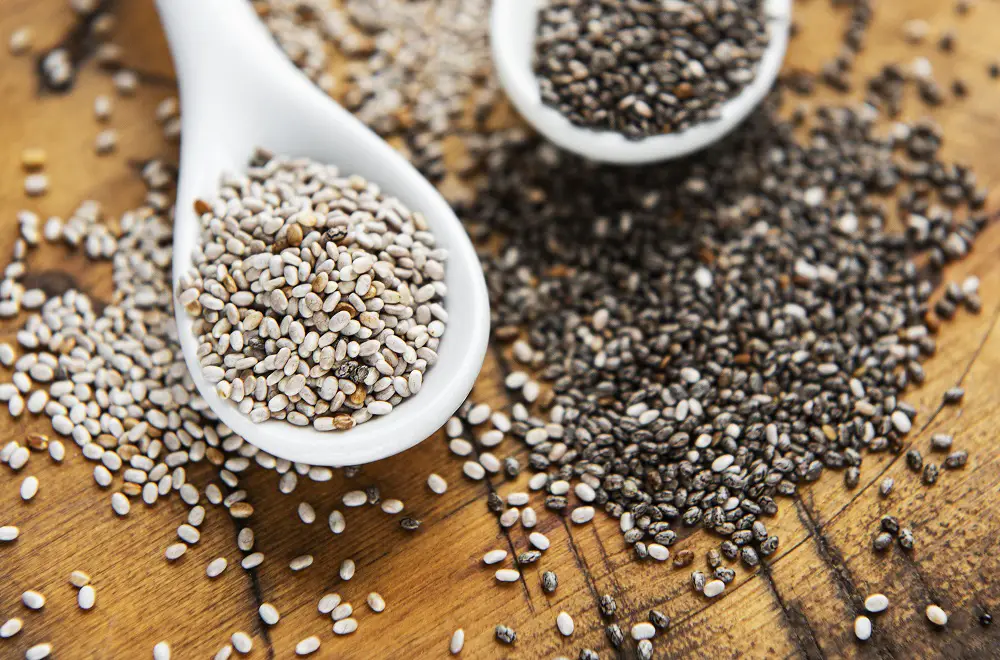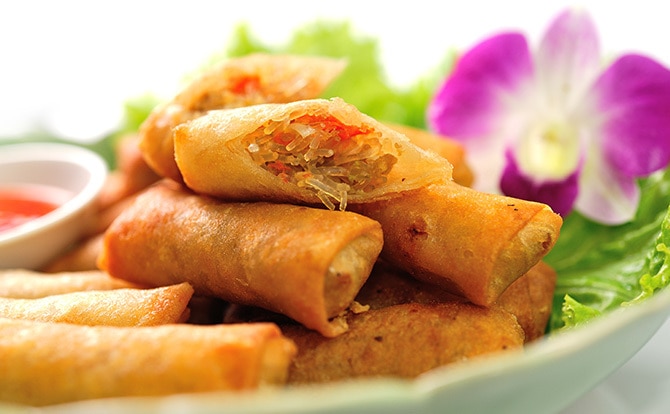Difference Between White and Black Chia Seeds
Chia seeds have been around since the Mayan and Aztec eras, renowned for being a source of sustainable energy. Even today, almost all diets and nutritional plans include them to be used in one way or other for their incredible health benefits.
And if you have looked through a few recipes, you might have noticed that there are two types of these whole grains used. So, it is natural to wonder if there is any other difference between white and black chia seeds besides their color and if one is superior to the other.
We have all been there at some point, and now after doing some thorough research, we are here to point out the dissimilarities even though they are very marginal.
A Brief Overview of Chia Seeds

Since we are here to enlighten you about chia seeds, why do we not start at the very beginning and include a little history? After all, we take the saying ‘know what you put in your body’ very seriously.
Chia seeds were a staple in the Nahuatl (Aztec) diet, with records going as far as 3500 BC. These multicolor grains were eaten whole besides being used for medicine, drinks, and grounded and pressed into flours and oils, respectively.
The seeds were believed to be supernatural and sacred and were an important element of their religious practices. After the Spanish had conquered the lands, they banned the cultivation of the plants because of the superstitious and religious affiliation.
Fortunately, certain regions of Mexico secretly continued to grow them and stopped them from getting lost in history.
Chia, meaning strength in the Mayan dialect, is cultivated from the Salvia hispanica, a desert plant native to Mexico and Guatemala. They contain concentrated amounts of omega-3 fatty acids, carbohydrates, protein, antioxidants, fiber, along other healthy nutrients.
You can eat them unprocessed, and each ounce serving would amount to 139 calories. Because of their mild taste, you can also add them to different foods and drinks and enjoy them without even realizing it.
Also read the article about Soluble Fiber vs. Insoluble Fiber.
White vs. Black Chia Seeds: Are They Different?
Chia seeds are primarily found in two colors: black, white and occasionally brown. The latter, however, should be avoided as it is a sign of immaturity and is nutritionally inferior as well. But the other two have slight differences which are considered completely negligible.
Their Appearance Is What Sets them Apart!
Black chia seeds have a veined exterior and are the most widely available in the current economy. They get their dark pigmentation because of the higher volume of anthocyanins contained, which usually results in dark purple flowers.
Compared to their lighter counterpart, black chia seeds are also smaller in size, but it is hardly noticeable.
The white chia seeds have a marbled glint and are plucked from the same plant, but it just has white flowers instead.
They were initially cultivated separately, but they ended up merging when the white chia production dropped. Thus, in this case, heritability is the sole reason why they have two colors.
Their Composition Is Slightly Different
This variation in their composition is marginal, so much that most people argue that they do not have any nutritional differences at all. Black chia’s protein content is a little higher, which results in a somewhat higher yield. On the other hand, the latter is a bit richer in ALA Omega-3 fatty acid.
After rigorous testing, it was found out that these minute content variations only appear due to the different locations and climates the plants were grown in.
They Taste the Same!
Both the seeds are prepared and processed the same way, so there are no possibilities that they might have different tastes. Even the textures are the same and would not possibly separate them if you try them blindfolded.
Some Articles You Will Find Interesting:
- Sea Salt Vs. Table Salt: 3 Key Differences
- Distilled Vs. Purified Water: What Are The Main Differences?
- How Are Diet Coke and Coke Zero Different?
- Saturated Vs. Unsaturated Fats -What Are The Differences?
So, Which One to Use for Food?
For the sake of aesthetics, you could opt to choose black chia to be consumed whole or as an oil and the other for meals and flour. To create interesting patterns with your food, you might choose the contrasting shade of the base ingredient used.
Or, if you have fussy eaters who pick at everything, you might choose a similar shade for a smooth blend.
Final Words
You should engrain it in your mind that there is no difference between white and black chia seeds, except for their color. So, the next time you are in the market, you can just pick depending on your mood or the color of the meal you have planned. Maybe even get both!







